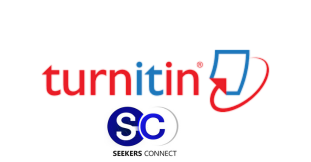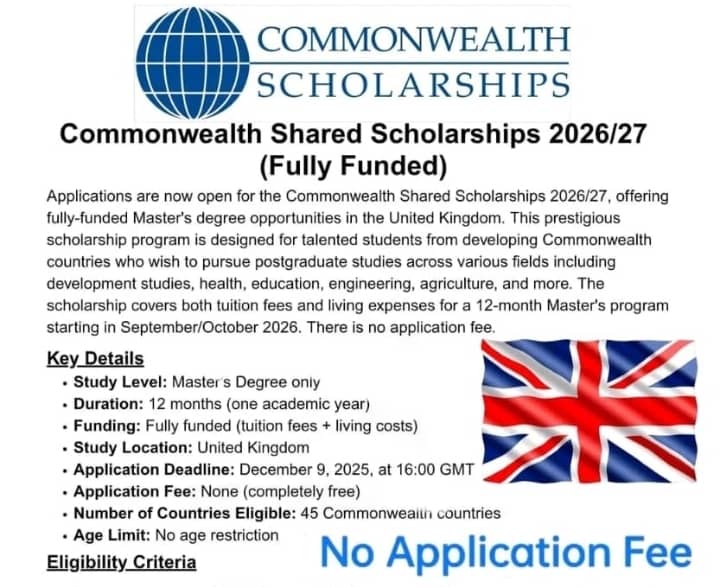
A Complete Guide to Using Turnitin at UDS
This guide provides an overview of Turnitin, its purpose at the University for Development Studies (UDS), and the essential guidelines for its use by both students and faculty.
What is Turnitin?
Turnitin is an educational software tool designed to promote academic integrity by helping to identify potential plagiarism in written work. It works by:
-
Scanning submitted text against a massive online database of published and unpublished materials.
-
Generate a color-coded Similarity Report that highlights matching text.
-
Providing a Similarity Index (a percentage) that indicates the overall amount of matched text.
Crucially, Turnitin does NOT:
-
Decide what an acceptable similarity score is.
-
Determine if plagiarism has occurred. This judgment is based on UDS’s specific policies and a thorough investigation by faculty.
Key Guidelines for Users
For Students: Submission Rules
-
File Formats Accepted:
- Microsoft Word (.doc, .docx),
- PDF,
- PowerPoint (.ppt),
- HTML,
- Plain Text (.txt),
- Rich Text Format (RTF)
- Portable Document Format (PDF)
- OpenOffice
- Hangul (HWP)
-
File Size Limit: 40 MB. Reduce size by removing images. Text-only files should be under 2 MB.
-
You must be pre-informed by your lecturer if your assignment requires a Turnitin submission. Secret checks are not permitted.
Understanding the Similarity Report
UDS has set the following acceptance thresholds:
-
Overall Similarity Index: Must not exceed 20%.
-
Single Source Match: Must be 2% or below.
-
Unbroken String: No single phrase should exceed 10 words without citation.
What is ignored?
-
Properly cited direct quotations (in quotes with an in-text citation).
-
The bibliography, cover page, and declaration.
The Submission Process
For Graduate Students (Theses/Dissertations)
-
Draft Stage: You are encouraged to submit drafts to review your Similarity Report and make corrections. These drafts are NOT saved to the permanent repository.
-
Final Submission: The final version must be scanned through Turnitin.
-
Print & Attach: The final Similarity Report must be printed, signed by your supervisor, and attached to your thesis before it is sent to examiners.
-
Final Deposit: After successful defense and corrections, the library will deposit the final version into the UDS Institutional and Turnitin Standard Repositories.
For Undergraduate Students
-
Faculties/Departments will set their own modalities for using Turnitin on assignments and projects. These must be duly communicated to students prior to the start of the project dissertations.
-
You are strongly encouraged to use it for drafts to learn and improve your work.
-
Supervisors are there to help you interpret the reports.
What Happens If Plagiarism is Suspected?
-
Not Automatic: A high similarity score alone is not proof of plagiarism.
-
Investigation: The full report is examined to understand the context of the matches (e.g., are they properly cited?).
-
Committee Review: A Graduate Studies Committee (for graduate work) or departmental authority will conduct a thorough investigation based on the UDS Plagiarism Policy.
-
Opportunity to Resubmit: In many cases, you may be given one chance to revise your work and submit a new Turnitin report.
Important Limitations of Turnitin
Turnitin is powerful, but it has gaps. It cannot detect:
-
Plagiarism from books or sources not available online.
-
Work that has been plagiarized by translating from one language to another.
-
Plagiarized images, graphs, or mathematical equations.
-
Text within encrypted or password-protected files.
-
Scanned handwritten documents.
Remember: Turnitin is a tool to aid learning, not a substitute for understanding and practicing good academic integrity.
Follow us on WhatsApp for more updates: https://whatsapp.com/channel/0029VaCyYGIFHWpx22L38a2K
Seekers Consult
Contact Us for Your Study Abroad Journey
We search for schools and check available scholarships for you
Contact: 0550414552 / 0362297079

Loan for government workers
Transcript Application
English Proficiency
Recommendation letter
Project work/thesis for undergraduate, master’s, and PhD students.
Apply for Affidavit, Gazette instantly
Passport and Visa Applications
All other Internet Services
Understanding Turnitin at the University of Ghana: A Student & Faculty Guide
This guide explains the purpose, rules, and procedures for using Turnitin at the University of Ghana (UG), as outlined in the official Plagiarism Policy.
Why Does UG Use Turnitin?
The University of Ghana introduced Turnitin to support its core value of Integrity. Its purpose is educational, not punitive. The software is a tool to:
-
Help students and faculty identify potential issues with uncited material in their work.
-
Facilitate the process of ensuring academic integrity by properly acknowledging the work of others.
-
Give the university community confidence that the submitted work is original.
What is Turnitin?
Turnitin is an educational text-matching tool. It works by:
-
Comparing submitted work against a massive online database of published and unpublished materials.
-
Generate a color-coded Similarity Report that highlights matching text.
-
Providing a Similarity Index (a percentage) that indicates the overall amount of matched text.
Crucially, Turnitin does NOT:
-
Decide what an acceptable similarity score is.
-
Determine if plagiarism has occurred. This judgment is based on UG’s institutional norms and a thorough investigation by faculty.
UG’s Acceptance Thresholds
For a submission to be deemed acceptable, it must meet ALL THREE of the following criteria:
-
Overall Similarity Index: Must not exceed 20%.
-
Single Source Match: Must be 2% or below from any one source.
-
Unbroken String: No single phrase or sentence should exceed 10 words without citation.
Note: A report with a 24% similarity index or below will often show as GREEN in Turnitin, indicating it is within the acceptable range.
What Counts as Plagiarism?
The guidelines address these common sources:
-
Text Matching: Exceeding the acceptable thresholds.
-
Copy/Pasting: Lifting phrases, sentences, or paragraphs from the web, textbooks, or journals.
-
Improper Quotation: Failing to properly acknowledge direct quotes (using quotation marks and citations).
-
Paraphrasing: Using someone else’s ideas or reworded text without citation.
-
Copying from Peers: Submitting another student’s work as your own.
-
Copying Data: Reproducing lab data, course material, or lecture notes without acknowledgment.
The Submission Process: What You Need to Know
For Everyone:
-
All submissions are made through the SAKAI LMS (Learning Management System).
-
Your instructor must inform you in advance if an assignment requires a Turnitin submission.
-
You are often allowed multiple draft submissions to review your report and improve your work before the final deadline.
For Graduate Students (Theses/Dissertations/Long Essays):
-
Draft Stage: Submit drafts to check your Similarity Report. These are NOT saved to the public repository.
-
Final Approval: You must print the final Similarity Report and attach it to your thesis for the Departmental Graduate Studies Committee.
-
Committee Review: The committee reviews the report. If levels are unacceptable, you typically get one chance to revise and resubmit.
-
Graduate School Submission: Your thesis must be accompanied by a signed Turnitin report. The Graduate School may recheck any work.
-
Final Deposit: After successful defense and corrections, the Balme Library will deposit the final version into the UG Institutional Repository.
For Undergraduate Students:
-
Departments will set their own rules for submissions, which will be clearly communicated to you.
-
You are encouraged to use Turnitin for long essays and projects to learn and avoid plagiarism.
-
Supervisors are there to help you interpret the reports.
What Happens If Plagiarism is Suspected?
-
A High Score is Not Proof: A high similarity index alone is not sufficient to prove plagiarism.
-
Visual Inspection: Faculty must carefully review the full report to understand the context of the matches (e.g., are they properly cited?).
-
Investigation: The investigative procedures outlined in the UG Plagiarism Policy will be followed. This involves the Graduate Studies Committee for graduate work.
-
Documentation: Faculty must document the entire process in detail, which is essential for any appeals.
Important Limitations of Turnitin
Turnitin is powerful, but it’s not foolproof. It cannot detect:
-
Plagiarism from old books or sources not available online.
-
Work that has been plagiarized by translating from one language to another.
-
Plagiarized images, graphs, or mathematical equations.
Remember: Turnitin is a tool to aid learning, not a substitute for understanding and practicing good academic integrity.
Follow us on WhatsApp for more updates: https://whatsapp.com/channel/0029VaCyYGIFHWpx22L38a2K
Seekers Consult
Contact Us for Your Study Abroad Journey
We search for schools and check available scholarships for you
Contact: 0550414552 / 0362297079

Loan for government workers
Transcript Application
English Proficiency
Recommendation letter
Project work/thesis for undergraduate, master’s, and PhD students.
Apply for Affidavit, Gazette instantly
Passport and Visa Applications
All other Internet Services




